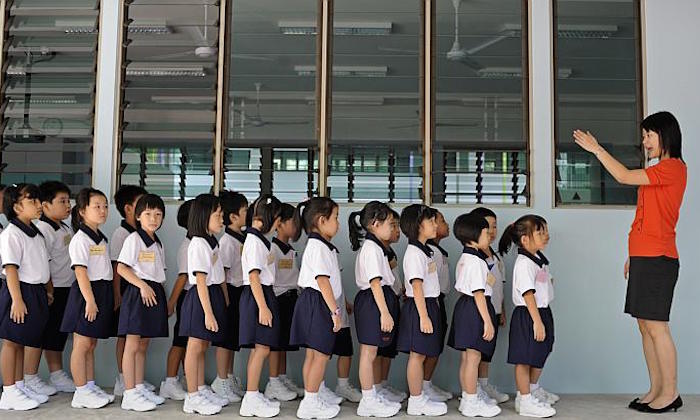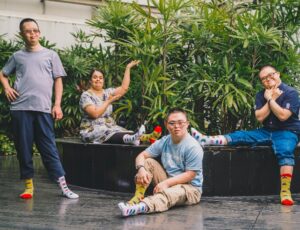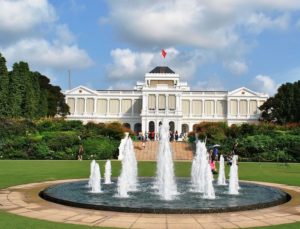

If you’re an expat hoping for your child to attend Singapore schools (either primary school or secondary school), here’s everything you need to know about the AEIS entrance exam
Following mama Crystal’s series on P1 registration and adjusting to the local school system, we heard from another mama with an older child who was keen to share her family’s experience with the AEIS (Admissions Exercise for International Students) test, which is now required of all international students in P2 and higher hoping to attend a local school. Mama Jo-Lynn’s account should be required reading for families moving to Singapore with hopes of joining Singapore’s renowned education system (not to mention saving some major dough)!
When our family was presented with the opportunity to move to Singapore in late Spring 2015, the topic of education and schooling for our 8-year old son was the leading subject of many conversations between my husband and I, as we weighed the pros and cons of moving from Vancouver, Canada to Singapore.
While we were aware of the many international schools available in Singapore, we decided to look into the local Singaporean education system and the admissions process for international students. Much has been written about the caliber of education in Singapore – a teacher friend once joked that even if you can’t point out Singapore on a map, you most likely have heard of “Singapore Maths”! Jokes aside, a few factors led us to choose this path – namely, Singapore’s reputation for high quality public education, and the cost comparison between local school and international schools.
The price difference is startling; as an expat student attending local primary school in Singapore, school fees are in the $6000 – $7000 range annually, versus $25,000 and above for international schools. It is common knowledge that compensation packages across a variety of industries these days often do not include international school fees for children, making the cost of international schooling onerous for expat families in Singapore.


Guided by information provided by the Ministry of Education via their website, and the Facebook group “Singapore Expats in Local Schools”, we found out that expats could either approach the schools of their choice personally to apply for admissions, or write the AEIS (Admissions Exercise for International Students) test conducted by MOE. If you pursued the former option, it appeared to be a bit of a numbers game, as your child had a better chance of admission at less popular schools, and/or schools in the newer areas. My husband and I felt that approaching the school directly would be the better option for our family, as it would allow us to visit the schools and meet with their administrative staff to get a sense of what each school is like, how it’s run, etc. With this in mind, we began the process of selecting an area and neighbourhood in Singapore to reside.
We took a break from moving plans for a few weeks, and when moving initiatives picked up steam again in July 2015, we were surprised to discover the Ministry of Education had changed its admissions policy for internationals students. The new mandate indicates all international students entering Primary 2 – 5 and Secondary 1 – 3 are required to sit for the AEIS test.
The AEIS test is held once a year in September/October, although there is the Supplementary AEIS (S-AEIS) test, which is held in February. As described on the MOE website, “AEIS consists of centralized test on English and Mathematics that will assess the applicants’ English literacy, numeracy and reasoning abilities. Applicants who pass the test will be offered a place in a suitable school, based on availability of school vacancies, their test performance and declared intended residential area in Singapore.” The Ministry of Education’s website also makes it abundantly clear that there will be no school choice, no release of test results (i.e. scores), and no request of school transfers for successful applicants.


At this point, I had mixed feelings about how best to proceed. The thought of my rambunctious, chatty 8-year-old son writing a test in a formal test environment was certainly daunting. At the same time, my husband and I reasoned that he had never been faced with a challenge like that – he could well rise to the occasion. In the end, the adage “nothing ventured, nothing gained” prevailed, so we signed him up for the September 2015 AEIS sitting and paid the test fee of $672.00 to MOE. Yes, you read that correctly – almost $700 for a child to write a standardized entrance exam. (In fairness, most international schools in Singapore have comparably priced registration fees.)
Between July and the end of September (his test date was September 30, 2015), we exposed our son to Singapore style workbooks on English and Mathematics as preparation for the AEIS. I recognised the difference in my son’s Canadian, IB-based (International Baccalaureate) studies versus the Singapore methods, so our goal was to get him comfortable with the Singapore style of answering questions. In all honesty, I am no Tiger Mom, and with an international move happening in the background, we took a rather casual approach to his studies. I know now from talking to other parents, and hearing shared experiences on the “Singapore Expats in Local Schools” Facebook page, some families chose to enroll their children in AEIS test-preparation courses, hired private tutors, or were a lot more focused and structured in their home-based test prep.
September 30th rolled around, and test day was upon us. Our family rose early that morning, as we had to make our way out to the Singapore Expo and Convention Centre by 8AM. Our little man was in good spirits, and fairly relaxed – though when our taxi pulled up to the Expo and Convention Centre, and we saw the huge crowds of parents and students in a queue, I think we all had to inhale a deep breath! The test started with Mathematics, which candidates had 1h50min to complete, followed by a lunch break, and then the English paper which lasted for one hour.
After completing the test, all candidates now had to wait over 10 weeks to receive their results. While the waiting game is never fun, it did give us time to consider and make arrangements towards our Plan B.


At long last, December 14, 2015 came – this is the date the AEIS test results were to be released. My husband and I had absolutely no idea what to expect, though based on the number of test candidates on September 30th, I was more prepared for a negative outcome than a positive one. My hunch proved to be correct, as the online test result revealed.
I can’t say there were pangs of sadness in not obtaining a spot; after such a protracted process, our family was happy for resolution and to move forward with our Plan B (international school). I had also wondered if public school in Singapore would be a good fit for my son, based on his ants-in-pants, gregarious ways. I would consider our family fortunate, as we’re able to afford international school fees – there are many expatriate families who cannot afford this option, and I feel deeply for their sense of disappointment and frustration. While families knowingly sign up for the AEIS aware of the lack of transparency in the process, it doesn’t make the process right. Singapore and the Ministry of Education can and will create the rules as it best suits the country, but I feel some thought should be given to the portion of its work-force who are here on Employment Pass, but contribute to the Singapore economy and growth.
We have a younger son who will enter Primary 1 in a few years. Assuming we still reside in Singapore at that time, I’m not certain which path we’ll pursue for him – although I sincerely hope MOE’s policies towards international students warm up in the near future.






 View All
View All





 View All
View All








 View All
View All




